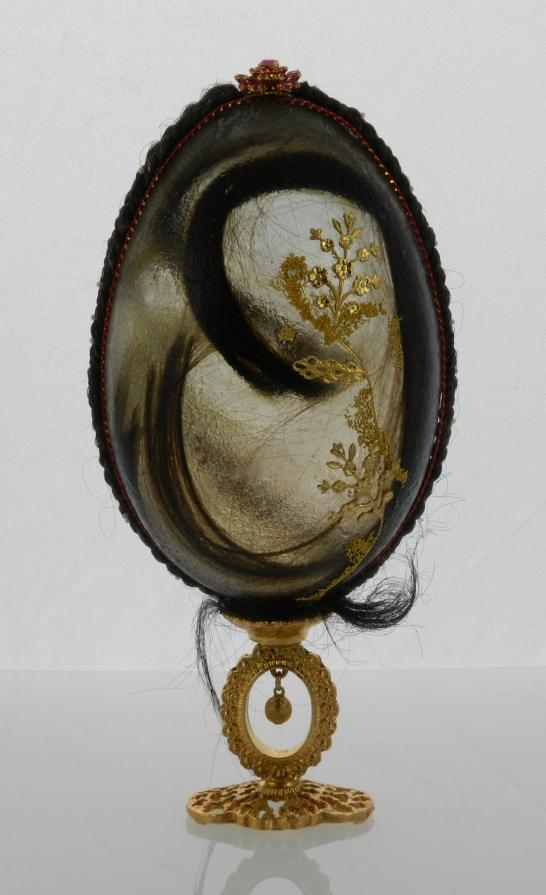The Empire Egg Collection (Our hair in their cabinets)
In essence, the work encompasses hair from different ethnic groups, cast in wax or resin in the form of eggs and is decorated in accordance with perceived stereotypes of five different colonial ethnic identities.
My view is that hair is strongly connected to identity and to our sense of self, of beauty or attractiveness and of value. Hair is seen as a valuable product in a lot of cultures and in many cultures real and fake hair extensions can be bought and sold, in fact hair is now a global commodity.
On the other hand, other people’s hair can make us feel very uncomfortable especially if we come across it unexpectedly and if it is different from our own, or we find it in a place that we do not expect to find it. Consider for example the human hair used to make blankets and cloth in the concentration camps of Nazi Germany (www.history.ucsb.edu)
The work uses hair to play on the idea of ‘otherness.’ However the immediate reference point is that of eggs. More specifically, Faberge eggs are highly decorative objects made from egg shells, precious metals and semi precious gems stemming from Russian culture. They are now collector’s items worldwide whilst being strongly associated with the culture of Eastern Europe. An additional cultural association for me is that of Hundred year old eggs. Hundred year old (century) eggs are a traditional Chinese food eaten on special occasions. They are shared, with each person taking a small amount, reflecting a sharing of lives. These eggs are instantly recognisable in the Chinese culture. By using the form of eggs, I have also endeavoured to symbolise the idea of cultural identity becoming a commodity, a collector’s item while more subtly playing with the translation from an Asian perspective.
Finally the collector’s item theme is continued in the choice of display. The eggs are presented in display cases on plinths. This enhances the status of the sculptures and a strong sense of their importance. They work as individual identities but also as a global collection. This is supported by a collector’s catalogue which leads the viewer to believe this ‘tongue in cheek’ fictive collection that both mocks the British Empire stereotypes (of their subject races) and reflects its ‘parental sense of responsibility, toward its valued ‘possessions’ (Barringer, 1998) Furthermore, the display of the work in a museum places it in an involved multi-layered place of authority, education and leisure. It mediates a starting point for society and underpins existing knowledge. It is intended that the display suggests the same cultural code as the British Museum, with its rich pickings from British imperialistic developments.









Commenti 0
Inserisci commento